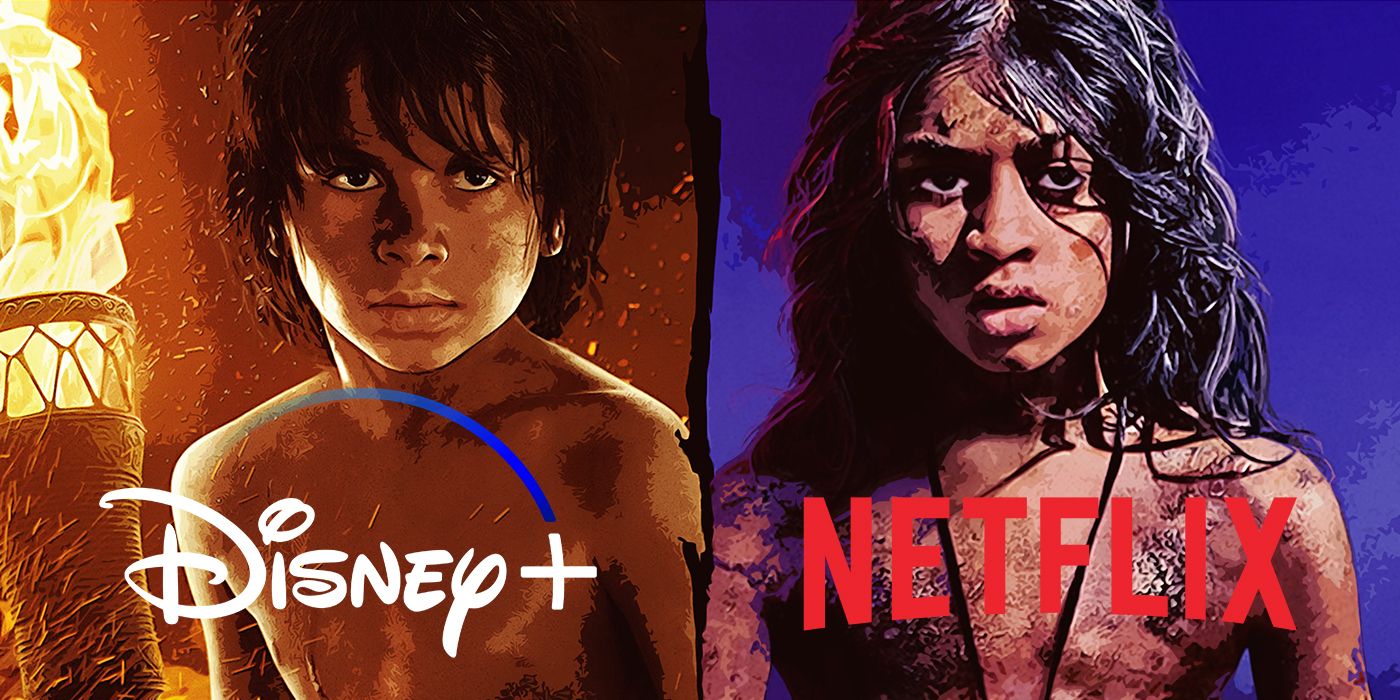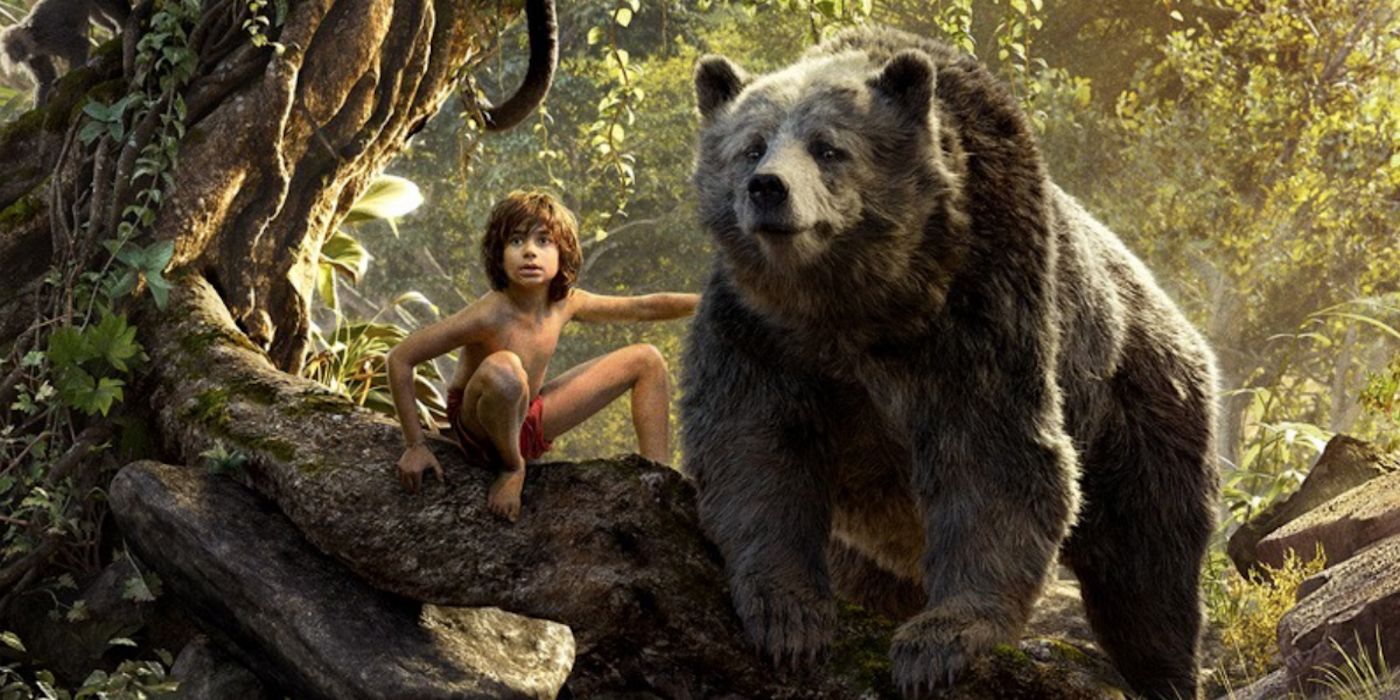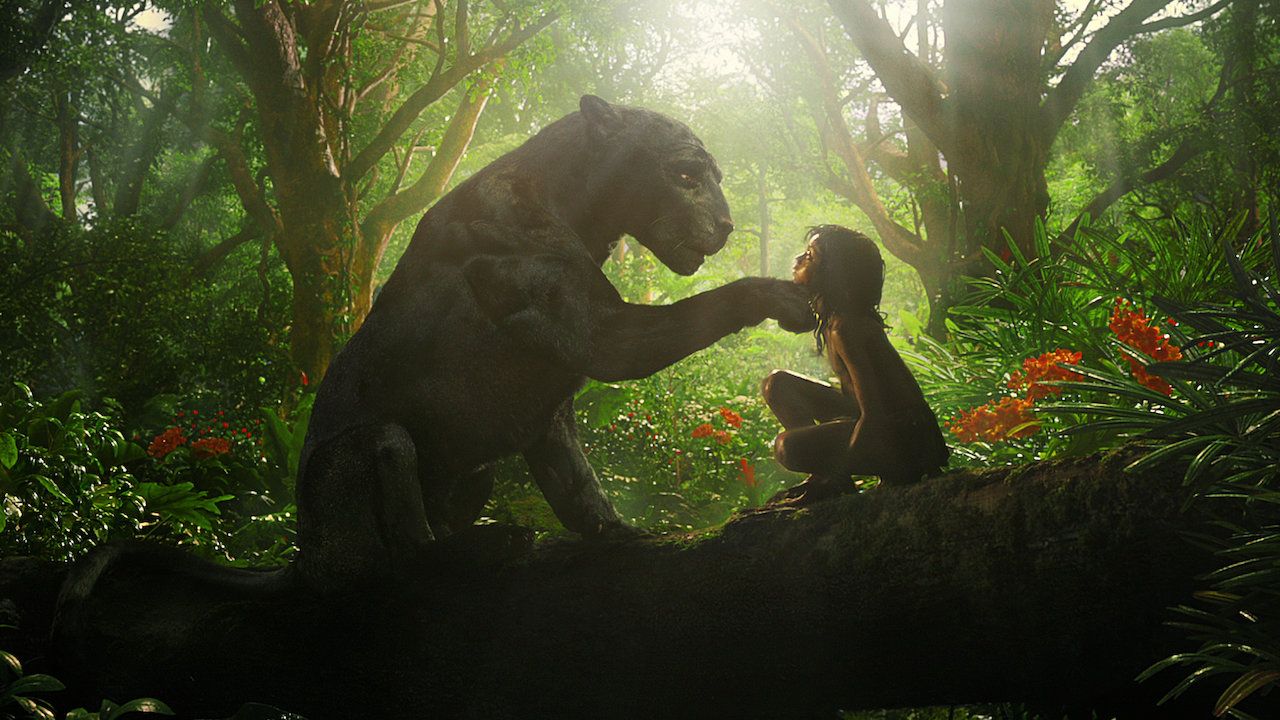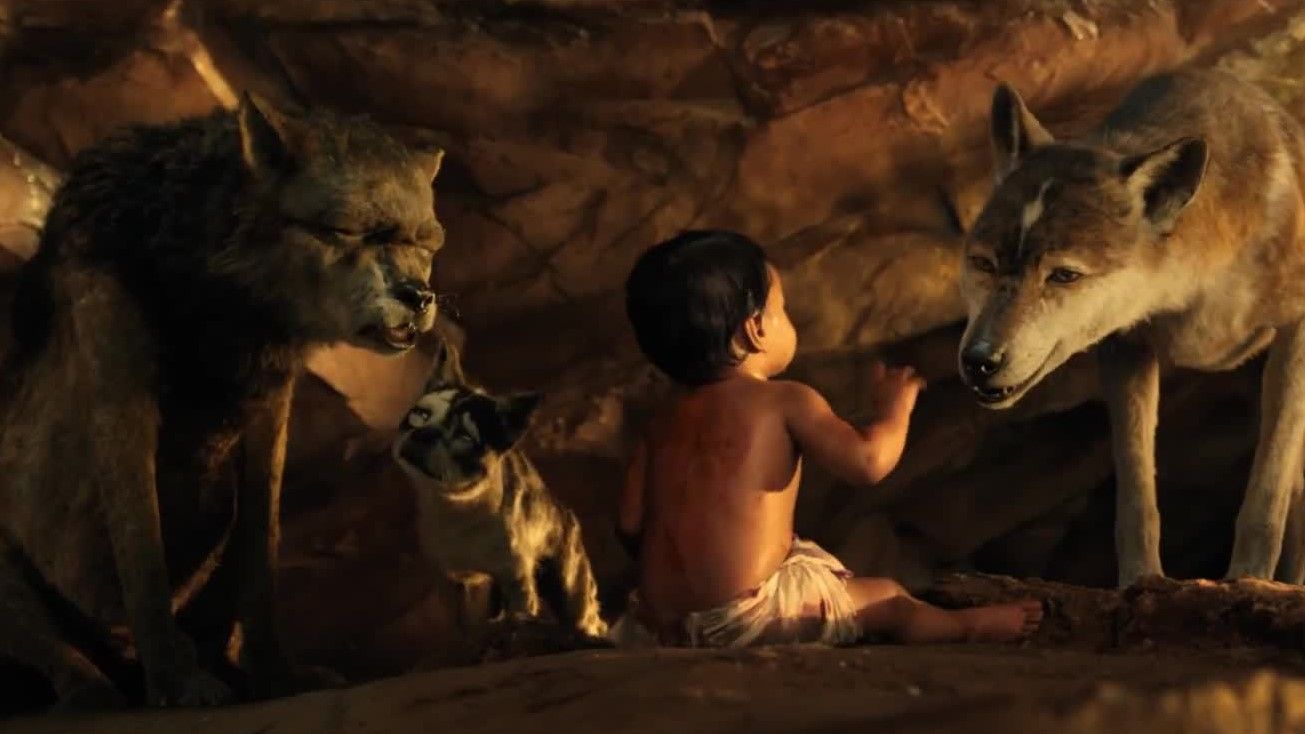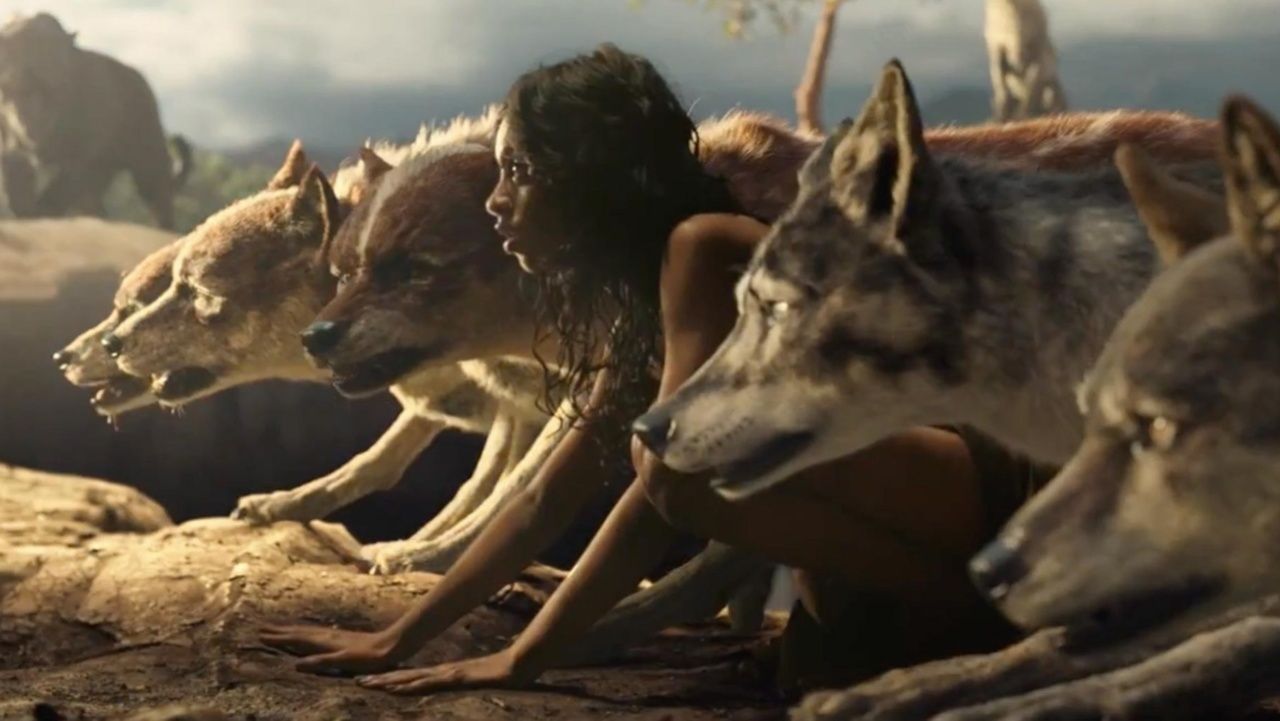Disney's 2016 live-action remake of the classic 1967 The Jungle Book animated film honors its source material in some ways, but it also lacks something that many Disney films lack. The original 1967 animated film, The Jungle Book, is itself a radical deviation from its own source material, the 1894 collection of short stories by Rudyard Kipling.
However, there is another adaptation of the original short story collection that turned out to be Disney's competition. The Warner Bros. film, Mowgli: Legend of the Jungle (2018), sold to Netflix. Directed by motion-capture star Andy Serkis, this film was initially announced long before Disney's remake was confirmed, but Disney beat them to the punch and released its film first, leading the Netflix film to get tragically showered in groans of indifference from viewers and critics who felt they had seen it before.
They had not. There are, of course, plenty of similarities with the Disney movie and Mowgli, mostly due to the remake taking more elements from the source material than the original animation did, but Mowgli is not the happy-go-lucky adventure film the Disney competitor is. The Jungle Book is a Disney film, after all, and Serkis' jungle epic is a much darker, scarier, and even disturbing take on the original Kipling anthology. So much so that it's arguably not even fit for kids. There is grit, violence, death, and even brutality in a way that befits the original stories with serious, adult themes.
There is even one particular scene that probably left many kids traumatized. The jungle is harsh and unforgiving, filled with raw struggle and conflict referencing the cruel law of the wild, which the Disney film only paid lip service to yet never embraced in its visceral glory. The animals that live within are truly animals, capable of great ferocity, threat, rage, and hate, but still somehow love and compassion through the turmoil and ruthlessness of nature. There is an almost admirable quality of honor in this untamed world.
Mowgli feels more in line with an old classic. Rather than just being a cute adventure story, it really feels like something based on classical British literature from over a century ago. Part of that is in the characters themselves. While the Disney film devotes itself to creating realistic animals, it can suffer from the issues that plagued Disney's 2019 live-action remake of The Lion King — animal characters failing to visually show human emotion. Mowgli focuses on putting the humanity in the animals — sometimes to uncanny degrees — by emphasizing their emotion in expressive facial structures, sidelining realism to allow its talking animals to take their proper roles as characters. You can also see the faces of the real actors behind the CGI, and that definitely gives them more personality.
The film is held up by an all-star cast for its animal characters who somehow bring out the exceptional sophistication of these creatures. Every voice lent to the film's animal cast is quite assuredly British, which is exactly what a film based on classic Hindu-British literature needed.
- Christian Bale voices Bagheera, who somehow manages to easily replace Ben Kingsley in the role of the wise black panther with so much more emotion. His relationship with Mowgli is less strict teacher and more protective older brother, and his character's backstory is more fleshed out than his Disney counterpart.
- The film's own director, Andy Serkis, also plays Baloo the bear, who is much more gruff with his strong cockney accent and tough personality, serving more as a drill sergeant character whipping the younger wolves into shape. He takes pride in his work and his wolves.
- Benedict Cumberbatch is Shere Khan, who once again demonstrates his unnatural affinity for voicing scary characters with growly voices, and plays the role with so much more savagery and menace than Idris Elba's more sophisticated villain, growling every word with abject hate.
- Cate Blanchett fittingly plays the yet-again female incarnation of Kaa the giant python, and unlike the Scarlett Johansson version, the character here acts as a storyteller and chronicler with a genuine fascination with the events taking place, rather than a random encounter pointlessly dumping exposition on her prey. There is a supernatural implication surrounding her mythical status in the jungle.
- Serkis' son, Louis Serkis, voices Bhoot, an original character. He is Mowgli's tremendously adorable albino wolf best friend, and his relationship with Mowgli based on their mutual abnormalities among their families serves to enrich both characters and inform Mowgli's growth later on.
- Peter Mullan voices Akela, the leader of Mowgli's wolf family, who oozes ancient wisdom and also plays a much bigger and more emotional role than his short-lived Disney counterpart.
- Naomie Harris voices Mowgli's wolf mother who sadly plays a noticeably smaller role than her Disney counterpart, and even seems to get forgotten near the end. The movie could have afforded to be longer and flesh her out more, especially considering it was not even two hours, suggesting there may have been some strong cutting here and there.
- Last but not least, Rohan Chand plays Mowgli, and unlike Neel Sethi's portrayal in the Disney film, Chand's take is a more feral version of the formerly squeaky-clean wild boy, throwing himself into the role with so much more animalistic energy. It truly shows that he was raised by wolves, and the movie even shows how this development took place as we explore the jungle culture Mowgli grows up in. This also manifests in better acting that flawlessly pulls off a level of ferocity not normally found in most child actors. Unlike Disney's version, Chand's Mowgli is more flawed, more emotionally intense, and at times, more tragic. Not only that, he is as dirty and unkempt as a wild boy would be, whereas Chand's Mowgli looks clean, spotless, and visibly less like he belongs.
Of course, the film is not perfect. A prime issue is the clear drive to preserve the integrity of the original writing in some form or another, which can make the dialogue sound awkward here and there. But then there are the character designs. To bring a more human appearance to the characters, the animals have human-like eyes and somewhat cartoony faces. While this works to the movie's advantage most of the time, it can stand out like a sore thumb. The VFX are definitely very noticeable in places, mostly with the wolves. When viewers go from seeing one very real animal like a domesticated cow to an obvious CG wolf seconds later, it can easily break the immersion. High-resolution benefits these character designs here to bring out the details. It is fascinating how Mowgli has the more realistic animals with less realistic VFX, whereas The Jungle Book has the more realistic VFX with the less realistic animals.
But what the film does do better in terms of visuals is authenticity. While it would be nice if the film were shot in India, it was filmed in South Africa, utilizing various real environments at times to create a far more believable setting, whereas the Disney film was shot almost entirely on a studio soundstage. Mowgli has some real environments that a story like this really needed. Plus, even the CGI environments in the movie are beautiful, so it's a shame this realism could not be reproduced as often with all the animals.
Speaking of "real," there is a much greater emphasis on man, the other human characters. This gives a beautiful look at traditional Indian culture, simultaneously adding a welcome touch of realism to a story filled with CGI talking animals to see more human beings. Not to mention, these people also give the film a great deal of heart as Mowgli spends time with them and embraces the human culture he never had, something he welcomes after fleeing from the jungle in shame when his use of fire to drive away Shere Khan earns him the fear of the wolves.
However, the film invites the viewer to question how humanity compares to the ruthless wild. Is it as pleasant as it seems? Or does this world have monsters too? The film manages to explore this without demonizing man's world at the expense of Hindu cultures like the Disney remake does with its almost supernatural and demonic depiction of civilization as something terrifying and overwhelming.
The only issue here is perhaps with the British hunter John Lockwood, named after Rudyard's father John Lockwood Kipling, portrayed as a drunk and a gleeful killer of animals for sport (something we are told is an affront to the law of the jungle) who meets an untimely demise by the end of the movie. This move was less than respectful when the real man was far from the character he is depicted as. An unnecessary ingredient, since the hunter was named Buldeo in the book.
While nothing legendary, the film's soundtrack is definitely more impressive as well with its stronger Hindu cultural influence layered throughout, giving the film so much more personality, rather than merely being some bombastic action score. The Disney film does get the iconic songs, but that is an apples and oranges comparison since this film is no feel-good musical. All these aspects and more give the film a unique personality making it stand out in comparison to Disney's more distinctly "American" take on the Indian tale.
The inherent nature of the 1890s original stories, especially regarding the style of the writing, makes it incompatible with the cinematic medium — even more so for modern audiences — without taking liberties in the translation. Although, it is much closer to the legend than the Disney film and easily the preferable watch for fans of the source material. If you can get over the way the animals sometimes look and the undeservedly short length, it is assuredly a richer, more nuanced, and more interesting film.
Had this film been more successful, it might have set a precedent for more authentic adaptations of the original stories that the classic Disney animated films are based on, making Netflix or Warner Bros. interesting competitors to Disney and their modus operandi of remaking prior inaccurate adaptations in live-action. For example, Victor Hugo's 1831 novel The Hunchback of Notre-Dame, or Daniel P. Mannix's The Fox and the Hound (1967), breaking free from the "Disney-fication" of these classics by adapting them with all their gritty heart and soul.

